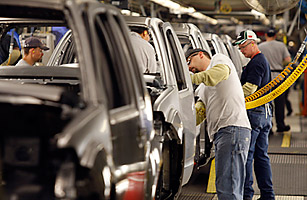
The Obama Administration has approved fuel-economy regulations, beginning with 2012-model-year vehicles. The rules require automakers to improve fleetwide fuel economy and to reduce fleetwide greenhouse-gas emissions by approximately 5% every year up until the 2016 model year. On fuel economy, manufacturers must achieve a combined average vehicle-emission level of 250 grams of carbon dioxide per mile, which equates to fuel efficiency of 35.5 miles per gallon.
The targets are aggressive, but they may not be as difficult to meet as you might think. All the automakers have agreed to the rules because they think they can use new but existing technology to meet the standards. Here are the key ways that carmakers believe they can achieve the new targets:
Aerodynamic Styling Reducing friction or aerodynamic drive has become a major goal of automotive designers. The front of the vehicle, wheel wells and underbody, where the industry’s cost-conscious executives were loath to spend money in the past, are being redesigned to produce substantial reductions of 5% to 10% in aerodynamic drag. The energy savings can be significant. A 10% reduction in drag increases fuel economy by approximately 1% for cars and approximately 2% for trucks with conventional internal-combustion engines, according to the Ford Motor Co. In the 2010 model year, Ford introduced modifications to the Ford Fusion and Lincoln models to make them 5% more aerodynamic, producing a half-mile-per-gallon improvement in fuel economy. Cool Paint
Cool paint, as its name implies, helps keep the car’s interior from overheating if it’s left in the sun. Technically speaking, cool paint, which is based on nanotechnology, reduces the thermal load on the car, which means the air-conditioning doesn’t have to work as hard or as long, providing a small but noticeable boost to fuel economy of roughly 1% to 2%.